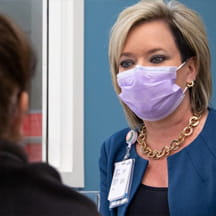Situated just a few blocks from the site of George Floyd's death, the Minneapolis campus of Children's Minnesota was ground zero for the ensuing protests and civil unrest. With hospital operations already disrupted amidst the COVID-19 pandemic, the crisis at the hospital's front door presented a challenge for hospital staff.
"This is one of those stories that is hopefully a once-in-a-lifetime experience," says Jim Leste, M.S., FACHE, CHSP, vice president, operations, Children's Minnesota in Minneapolis. "But as I see things unfolding across the country, I think more children's hospitals are going to have to navigate some of these challenges."
2020 experiences inform best practices
The situation grew so tense the National Guard was deployed to Children's Minnesota for several days to help maintain safety and security for the hospital's patients, families and staff. And while most children's hospitals will likely never encounter a crisis of that magnitude on its campus, Leste says there are three crucial components to emergency response hospitals should consider:
Leadership presence. "One of the things we tried to emphasize throughout this process—and it's something we can never lose from a leadership standpoint—is rounding with our employees," Leste says. "Executive leadership decided we all needed to be visible; we needed to be there for staff and hear their concerns."
Leste says seeing executives on rounds was also important in conveying a message of solidarity with staff members. "If you're coming on campus, you are risking your own safety to be there," Leste says. "But I can't tell you how important it is that the teams on site see the executive team is there responding, rounding and communicating. It's definitely a best practice we learned from this experience."
Community partnerships. "In advance of something like this, it's important for leaders to make sure they and their teams are familiar with the city and county emergency management officials they're likely going to need to lean on," Leste says.
Hospitals also should have solid relationships with their health care provider counterparts in the community, according to Leste. And the key is to begin forging those affiliations now—before a crisis happens.
"It was so helpful to be able to pick up the phone and call our city or county and say, "Hey, this is Children's Minnesota, and we are in some desperate need of help,'" Leste says. "I can't emphasize enough how important that collaboration and relationship building was in advance."
Emergency communications. Determine your crisis communication methodologies now and coordinate with all relevant parties so information can be disseminated quickly and efficiently in the mode or platform best suited to users.
"Whether it's email, your webpage or emergency notification system, have those things in place because you're going to have to leverage them constantly," Leste says. "People will want more and more information."
Read more about how Children's Minnesota emerged from civil unrest better prepared for multiple emergencies and more in tune with families and staff members.


